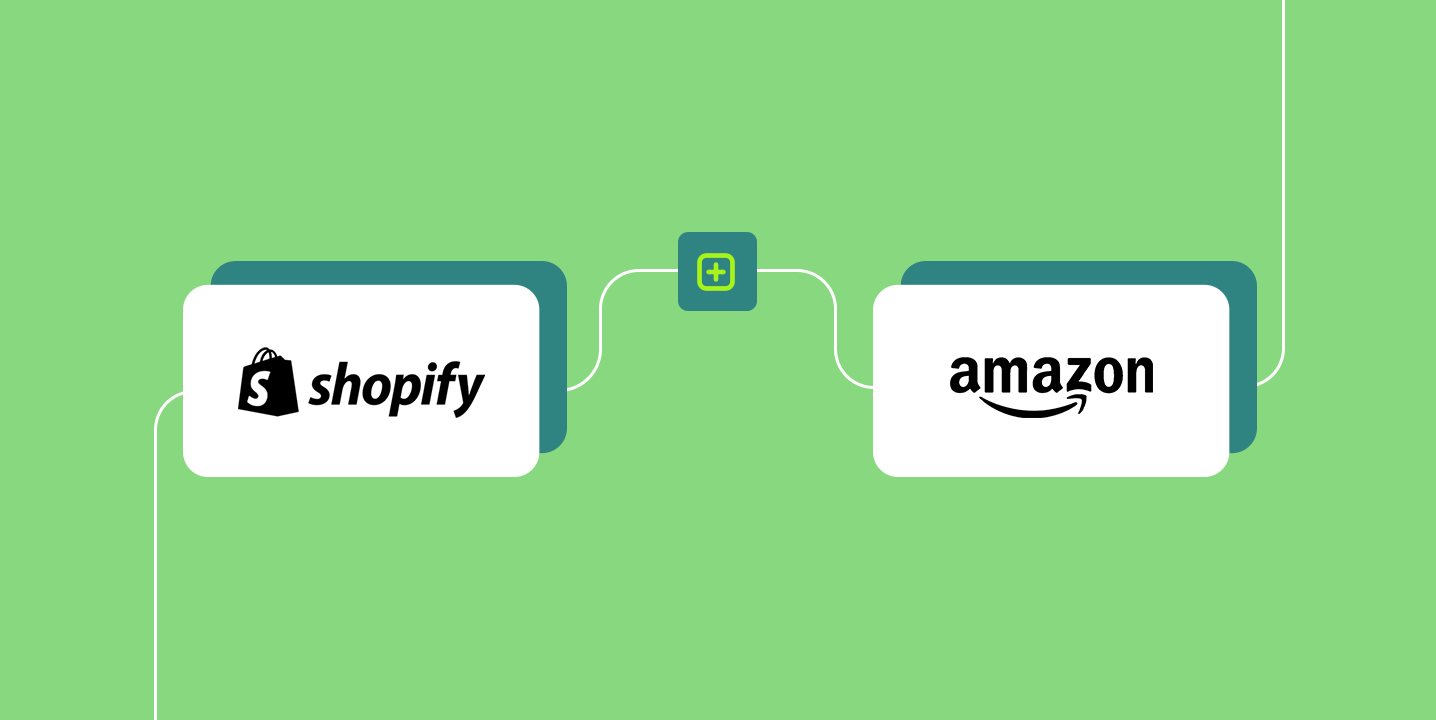Unquestionably, Amazon is in charge of the e-commerce industry. Thus, there are more buyers and vendors. There are no indications that this ecommerce monster will halt down.
It can be frightening to consider switching everything from Amazon to Shopify. Including items, transactions, URLs, and order fulfillment. But it’s a good idea to sell at both venues. Starting out strong is integrating Shopify with Amazon.
Integration with Amazon Shopify is a fresh method to raise brand awareness. As well as to increase sales. A lot of vendors are attempting to increase their visibility on Amazon. Let’s learn more about integrate amazon with shopify.

Table of Contents
Your Shopify Products Should Be Amazon-Ready
Let’s begin with the fundamentals before delving further into how to integrate amazon with shopify.
If your Shopify business is profitable, you’ve undoubtedly optimized your ads to meet Google’s SEO requirements. Amazon’s own proposed technique is the problem.
Pick an item that is currently selling on Amazon, go to its details page, grab the ASIN code, and then enter it into the program. Following that, a report of all the phrases that the item is listed for will be given to you, sorted by the number of monthly queries.
Make very sure to incorporate all of the pertinent high-volume phrases in your listing when you’ve identified them, such as the product name, supporting details, product details, and the listing’s hyperlink.
How many results your offer shows will depend on the parameters you use. Additionally, greater organic results on Amazon are attained by consistently generating sales for a search query that is mentioned in your listings.
Therefore, it’s essential to your success on Amazon that the keywords and phrases you’ve used in your postings are ones that people really use there to find things to buy.
Once more, there are tools made especially for the task of selecting the appropriate phrases for your Amazon posting.
Since there is no advantage to a keyword appearing more than once, there is no need to reiterate them. Additionally, ensure that you use them naturally so that the marketing content still makes sense.
How Does Shopify’s Amazon Integration Assist Retailers?
- You can connect any genre of Amazon items with your Shopify goods. Additionally, sync your Shopify account’s product information, pictures, and other variations with your Amazon vendor central account.
- Set specific rates for your Amazon product descriptions and secure your stock.
- Multichannel selling is preferred by vendors over standalone stores. Multichannel selling is the practice of marketing your products through various web platforms. This has recently started to get worse. It implies that you can continue selling on another route even if Shopify or Amazon goes out of business.
- Utilize Shopify data to its fullest extent to balance Amazon sales.
- On its website, Amazon provides affiliate marketing programs. It means that, for a set payment, affiliates promote the goods sold by the shops.
- As we all know, millions of people browse Amazon every day. With little marketing expertise, you can increase organic traffic using Amazon algorithms. The more traffic is generated, the earlier you begin. On the other side, you may sell items rapidly thanks to Shopify’s user-friendly layout. As a result, Amazon and Shopify integration gives retailers a lot of potential to increase their income.
- Wherever your customer’s shop, offer. This multichannel marketing gives you the ability to pinpoint exactly where and who your prospective customers are.
Next are the steps for integrate amazon with shopify.

How Can Shopify Be Linked To An Amazon Vendor Profile?
You must first have profiles on both Shopify and Amazon. MWS keys can then be used to link them.
A step-by-step tutorial on how to link your Amazon and Shopify profiles for an Amazon Shopify connection may be found below. You can now follow these to integrate amazon with shopify.
Step 1: Register with Shopify
Visit Shopify, type your email address, then select “Get Started.” Click “Create your store” after entering the chosen password and shop title. Following that, Shopify will query you about your company. While it is not required, you can inform Shopify that you actually offer on Amazon here. Click the Enter My Store button after entering all of your information. This is your foremost step to integrate amazon with shopify.
Step 2: Check the category and criteria authorization
- To determine your eligibility before beginning the Amazon sales channel, please review the prerequisites listed below.
- Make sure to list your products on Amazon.com in USD or Amazon.ca in CAD. Only the area and currency of your Shopify store can be sold to the Amazon sales force.
- On Amazon Seller Central, you must create a professional merchant account. Be advised that retailing on Amazon will incur both a per-item cost and a subscription service cost.
- You have a Shopify account that is valid.
- Your refund policy is on par with or better than Amazon’s.
Step 3: Adding Amazon as listing on shopify
Only some categories are allowed by Amazon for businesses to develop ads for the Amazon sales channel.
Following approval and fulfillment of your eligibility conditions, you can establish up the Amazon sales channel by carrying out the following actions:
- From the Shopify admin homepage, select the plus sign (+) next to “Sales Channels.”
- Find “Amazon” and select it by clicking the plus sign (+) sign next to the title.
- Link to your Amazon profile next. You’ll be requested to sign in with your current Amazon profile after you click Connect. You can create a pro seller account if you don’t already possess one by following the instructions on the screen. These procedures must be followed in order to manage your Amazon orders via Shopify.
Step 4:Make Amazon marketing materials
If you are already an Amazon seller, you can disregard this section. Shopify allows new vendors to create their product listings. The greatest things about Shopify are how simple it is to operate and how everything you create is mobile-friendly.
- Choose the Amazon sales channel you’ve set up. Tap on “Create Listing” on Amazon.
- Now choose the item you wish to list on Amazon by browsing the Shopify catalog.
- Select Product by clicking.
You must decide if your product was developed by your firm or if you are reselling something created by another company.
- If the product is something you made, select “Create a listing.”
- If you’re a reseller, choose “Find Product” instead. If the item is already featured on Amazon, look it up there. You’ll be given a list from Amazon of comparable goods. Select the products and create an offering after choosing your preferred option. You can still make a new category if you were unable to locate any pertinent products.
- On the listings page, complete the company’s information. Go forward and release the information.
Step 5 : Manage supply parameters
Every consumer who views your products or deals on Amazon can see the stock levels for each variety.
When it involves controlling supply preferences, you have two options. You may manually control the inventory quantity or use the inventory tracking options to synchronize your stock levels on Amazon.
- Create your Shopify FBA products so they can be fulfilled by Amazon. Proceed to the “Inventory” part on the “Add a Product” webpage to add an item to Shopify. Go to “Inventory controlled by” in a drop-down option and choose “Amazon Marketplace Web.”
- Make sure the product SKU in Shopify corresponds to the item SKU on Amazon.
- Select the “Manage Inventory” option under the “Inventory” tab in Seller Central. Copy the 10-digit number, then paste it in the SKU field. In Shopify, paste it into the “Inventory” tab under “SKU (Stock Keeping Unit).”
- Add the quantity of your Amazon merchandise to Shopify after you’re finished. Hit “Save” at the bottom of the page.
How Can I Complete Orders On Shopify?
You must ask Shopify to have Amazon deliver your orders after entering your shipment preferences and configuring your Shopify products.
This is the procedure.
- Go to “Orders” in your Shopify menu, step one.
- Click the proof of purchase on the “Orders” tab.
- To access the order’s fulfillment page, select “Start fulfilling” under the “Order Details” tab.
- The user’s selected shipping speed will be visible. enter the delivery option they chose (standard, expedited, priority.)
- Pick “Mark as fulfilled” under option #5.
- To declare the purchase as completed, click “Fulfill goods.”
- When finished, go to the “Orders” area to see the status of your order. When Amazon approves it, it is initially labeled as “Pending Fulfillment,” and then gets modified to “fulfilled”.
We hope we have made the process of integrate amazon with shopify easier for you.

Conclusive Insights
At first sight, Amazon can appear to be a threat to your company. After all, it has a huge audience, a worldwide industry, and is a popular place for users to conduct searches. Amazon, though, might actually assist in the growth of your business if used correctly. Listing optimization can introduce new markets for you and assist you in being found by a worldwide audience. With the help of Amazon promos, you can put your business ahead of the pack and take the stage in front of a specialized audience.
Your internet store serves as your headquarters, and Amazon gives you the chance to reach enormously large new consumers. Planning strategically, trying new things, and working hard will help you sell successfully on Amazon. Integrate amazon with shopify now!
